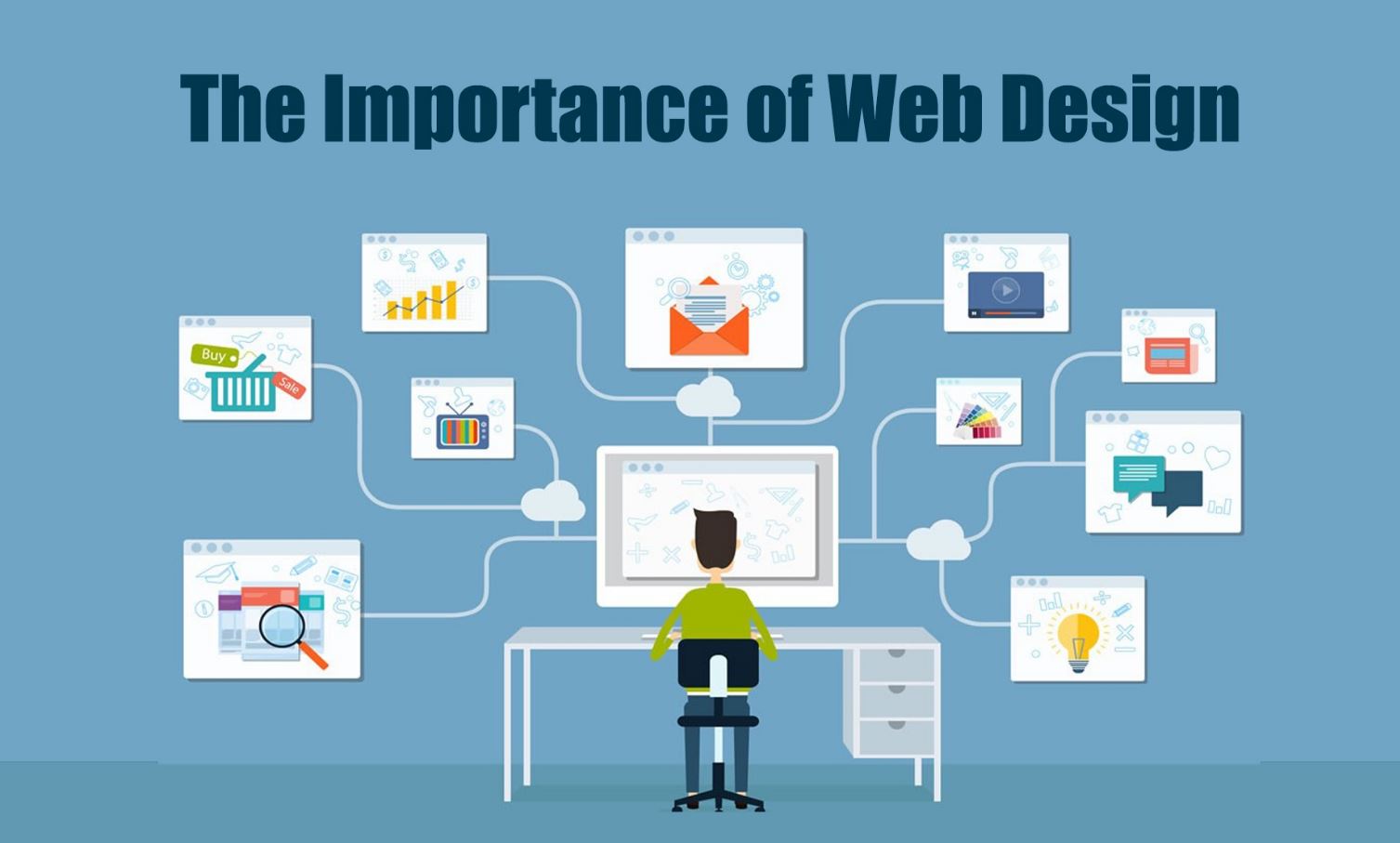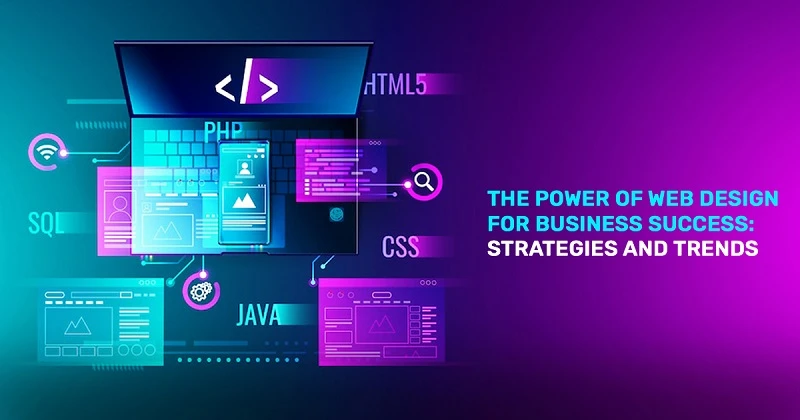How Web Design Affects User Engagement and Conversion Rates
How Web Design Affects User Engagement and Conversion Rates
Blog Article
Elevate Your Online Presence With Spectacular Web Design Tips and Trends
The interaction of visual appeal, existing style patterns, and user experience plays a pivotal duty in accomplishing this goal. The nuances of efficient style extend past visual appeals; comprehending key approaches for optimization can considerably influence your success.
Value of Visual Allure
This fact underscores the essential duty that aesthetics play in user involvement and retention. Effective visual layout includes elements such as shade systems, typography, images, and format, all of which add to a appealing and cohesive individual experience.
Moreover, an aesthetically appealing website instills a sense of trustworthiness and professionalism and reliability. Customers are more probable to trust a site that looks well-structured and sleek, which can substantially affect conversion rates. Conversely, a messy or unappealing layout can result in high bounce rates, as customers may view the site as unreliable or obsolete.
Additionally, the visual elements of a site can convey brand name identification and worths (Web design). Regular use of branding components, such as logo designs and shade combinations, reinforces recognition and fosters a much deeper link with the target market. In conclusion, focusing on visual allure is vital for producing engaging, trustworthy, and brand-aligned online experiences that reverberate with users
Current Layout Patterns
Modern internet layout is frequently developing, and staying updated with present patterns is essential for developing impactful on the internet experiences. One popular pattern is the increase of minimalism, characterized by tidy lines, sufficient white area, and a concentrate on important aspects. This strategy not just improves functionality but likewise enables content to take spotlight.
Additionally, dark setting interfaces have acquired popularity, giving users with a visually striking choice while lowering eye stress. This pattern lines up well with user preferences, supplying a modern-day visual that is both stylish and practical.
An additional notable trend is the incorporation of strong typography. Designers are increasingly utilizing big, expressive font styles to create visual hierarchy and convey brand name messages efficiently. Paired with vibrant color schemes, this pattern adds dynamism to websites.

Vital Style Components
Efficient internet style depends upon numerous crucial layout aspects that together produce a engaging and natural individual experience. The initial of these components is design, which dictates just how content is organized on the page. A well-structured design not only boosts readability but likewise guides users via the website perfectly.
Color plays an important role in design, influencing feelings and brand assumption. A harmonious color scheme can evoke details sensations and develop a visual power structure, therefore drawing attention to crucial components. Typography is crucial; the choice of fonts have to straighten with the brand identity and make sure clarity throughout devices.
Images, including photos and graphics, adds visual rate of interest and can interact messages rapidly. Premium photos pertinent to the material improve the overall visual and involvement. Furthermore, whitespace is usually overlooked but is necessary for developing balance. It aids avoid mess, allowing users to focus on the crucial elements without interruption.
Last but not least, consistency across all design elements strengthens brand identification and makes navigation intuitive. By carefully including these necessary layout elements, web developers can produce visually enticing and functional web sites that captivate visitors and motivate interaction.
Customer Experience Optimization
A seamless user experience is vital for preserving visitors and driving conversions on a website. Enhancing individual experience (UX) includes understanding your audience and important source tailoring style elements to satisfy their requirements successfully. Trick parts of UX optimization include user-friendly navigating, quick filling times, and clear phone calls to activity.
To enhance navigation, make sure that menus are arranged realistically and accessible from any kind of web page. Integrate breadcrumb tracks to assist individuals conveniently backtrack, minimizing irritation. Rate is another vital aspect; websites should fill within 3 secs to prevent individuals from abandoning the website. Make use of devices you can try here like picture compression and web browser caching to maximize load times.
In addition, your web site's design need to focus on clarity. Use understandable fonts, contrasting colors, and whitespace to create an aesthetically attractive design that guides customers through web content effortlessly. Contact us to activity must be plainly displayed, making use of workable language that motivates individuals to engage.
Mobile Responsiveness Strategies
Almost half of all web website traffic currently originates from mobile phones, highlighting the importance of carrying out durable mobile responsiveness techniques. To guarantee ideal customer experience throughout various screen dimensions, internet developers have to accept a fluid grid layout that adapts seamlessly to different tools. This approach permits material to rearrange and resize without endangering performance or visual appeals.
Integrating versatile pictures and media questions is vital. Photos ought to immediately adjust their dimension according to the viewport, while media inquiries can detect gadget features and apply tailored CSS designs appropriately. This strategy enhances lots times and ensures that individuals have an aesthetically appealing experience.
In addition, prioritize touch-friendly navigation aspects. Buttons and links ought to be easily tappable, with appropriate spacing to site link stop misclicks. Preventing hover-dependent interactions better enhances functionality on touchscreens.
Finally, carrying out regular screening across different tools and internet browsers is critical. Tools like Google's Mobile-Friendly Test can help identify areas requiring enhancement. By taking on these mobile responsiveness approaches, organizations can improve user involvement, increase online search engine positions, and inevitably drive conversions, therefore elevating their on the internet visibility properly.
Final Thought
In verdict, the execution of reliable website design techniques dramatically boosts on the internet visibility. By focusing on aesthetic charm through present design fads and vital components, companies can cultivate integrity and involvement. Maximizing user experience and guaranteeing mobile responsiveness are critical for promoting seamless communication throughout tools - Web design. As the electronic landscape develops, embracing these principles will not only astound site visitors yet also drive conversions, eventually contributing to the general success of online ventures.

On the other hand, a messy or unattractive design can lead to high bounce rates, as customers may regard the website as untrustworthy or out-of-date. - Web design
Efficient web style hinges on several crucial design aspects that together produce a engaging and natural customer experience. Enhancing user experience (UX) involves comprehending your target market and tailoring style components to fulfill their requirements properly.
Report this page